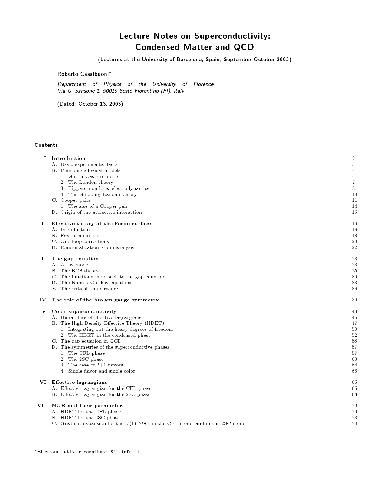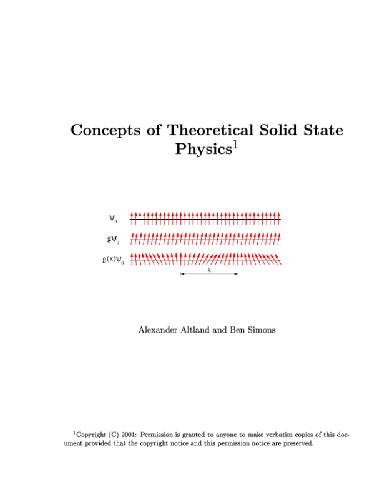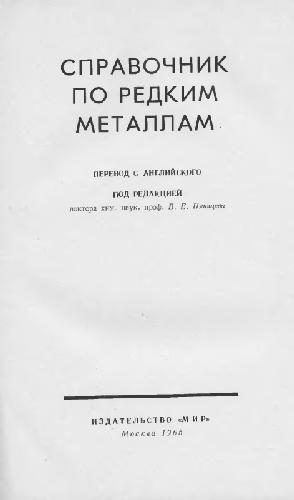D. Baeriswyl, L. Degiorgi1402017987, 9781402017988
The physical properties of low-dimensional systems have fascinated researchers for a great part of the last century, and have recently become one of the primary centers of interest in condensed matter research. At the beginning, this field appeared much more like a playground for creative theorists than a serious domain of solid-state physics, but it has since been demonstrated that the low-dimensional world has its own richness, and that there are real materials which to a good approximation may be considered as consisting of uncoupled chains or planes. In this book we attempt to convey the colorful facets of condensed matter systems with reduced dimensionality. Some of the specific features predicted for interacting one-dimensional electron systems, such as charge- and spin-density waves, have been observed in many quasi-one-dimensional materials. The two-dimensional world is even richer: besides d-wave superconductivity and the Quantum Hall Effect – perhaps the most spectacular phases explored during the last two decades – many collective charge and spin states have called the curiosity of researchers, such as charge stripes or spontaneously generated circulating currents. The recent years have witnessed important progress in material preparation, measurement techniques and theoretical methods. Larger and better samples, higher flux for neutron beams, advanced light sources, better resolution in electron spectroscopy, new computational algorithms and the development of field-theoretical approaches allow nowadays to analyze detailed questions about the complex many-body behaviour of low-dimensional materials. The epoch where a simple mean-field argument was sufficient for describing the gross features observed experimentally is definitely over. The aim of this book is not to review the most important results that have been accumulated recently, but rather to explain thoroughly certain selected topics. The emphasis of the more experimental chapters is on the application of dynamical probes, such as neutron scattering (Chapt. 2), optical absorption (Chapt. 6 and 8), and photoemission (Chapt. 3 and 5), as well as on transport studies, both electrical (Chapt. 10) and thermal (Chapt. 12). Some of the more theoretical chapters are directly relevant for experiments, such as optical spectroscopy (Chapt. 7), transport in one-dimensional models (Chapt. 11), and the phenomenology of charge inhomogeneities in layered materials (Chapt. 9), while others discuss more general topics and methods, for example the concept of a Luttinger liquid and bosonization (Chapt. 4) or duality transformations (Chapt. 13), both promising tools for treating strongly interacting many-body systems. | |







Reviews
There are no reviews yet.